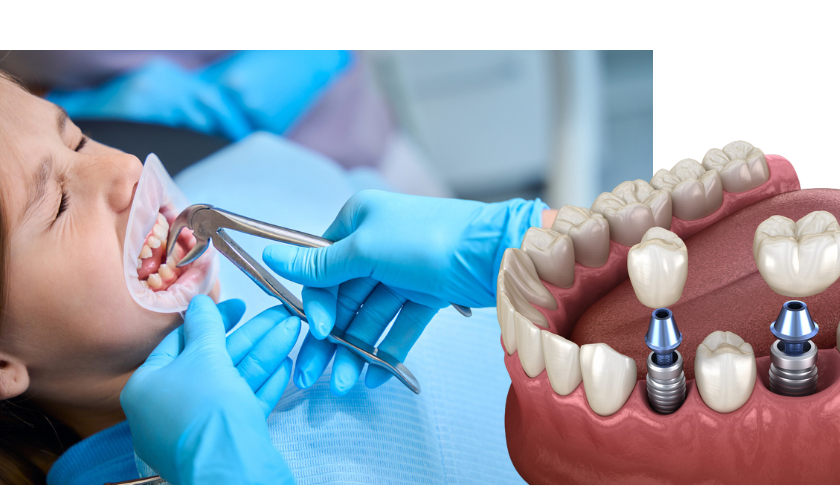Top Family, Cosmetic and Implant Center In 537 Amherst St, Nashua, NH 03063
The Different Types Of Dental Implants: Endosteal Vs. Subperiosteal

The introduction of dental implants has transformed the field of dentistry by providing a long-lasting and highly efficient means of replacing lost teeth. These remarkable innovations not only restore a person’s smile but also improve their overall quality of life. However, not all dental implants are created equal, and understanding the differences between various types is crucial for both patients and professionals. In this article, we will explore two main categories of dental implants: Endosteal and Subperiosteal. By the end, you will have a clear understanding of their unique characteristics, benefits, and indications.
Endosteal Dental Implants
Endosteal implants represent the prevailing choice for dental implant procedures in contemporary dentistry. These implants are surgically embedded directly into the jawbone, with the specific purpose of replacing the natural tooth’s root. Here is essential information you should be aware of regarding these implants:
Definition and Description: Endosteal implants in Nashua are made of biocompatible materials such as titanium. They come in various shapes and sizes, including screws and cylinders. The main feature of these implants is their direct placement into the jawbone.
Procedure and Placement Process: The placement of endosteal implants involves a surgical procedure. After the initial consultation and planning, the oral surgeon or dentist will drill a hole into the jawbone and insert the implant, which is then covered by the surrounding gum tissue. Over time, the bone fuses with the implant, providing a stable foundation for the artificial tooth.
Pros and Cons: Endosteal implants offer excellent stability and long-term success rates. They are suitable for most patients with sufficient jawbone density. However, they require a surgical procedure and may have a longer healing period.
Ideal Candidates: Ideal candidates for endosteal implants are individuals with good oral and overall health, adequate jawbone density, and those who prefer a permanent and stable tooth replacement option.
Subperiosteal Dental Implants
Subperiosteal implants are an alternative to endosteal implants and are designed for patients with insufficient jawbone density. Let’s dive deeper into this less common type of dental implant:
Definition and Description: Subperiosteal implants are placed beneath the gum but on top of the jawbone. They consist of a metal framework with posts that protrude through the gum to support the artificial tooth. These implants are ideal for patients who lack the necessary bone structure for endosteal implants.
Procedure and Placement Process: Unlike endosteal implants, subperiosteal implants do not require drilling into the bone. Instead, the surgeon places the metal framework on top of the bone, with the posts extending through the gum. As the gum heals, it adheres to the frame, stabilizing the implant.
Pros and Cons: Subperiosteal implants are a suitable option for individuals with bone loss or those who are not candidates for bone grafts. They involve a less-invasive procedure and typically have a shorter healing time.
Ideal Candidates: Subperiosteal implants are recommended for patients with reduced jawbone density, those who wish to avoid bone grafts, and those who need a quicker solution to tooth loss.
Key Differences Between Endosteal and Subperiosteal Implants
Now that we’ve covered the basics of each implant type, let’s examine the key differences between endosteal and subperiosteal implants:
Materials Used: Endosteal implants are made of titanium and are inserted directly into the jawbone. Subperiosteal implants, on the other hand, consist of a metal framework that rests on top of the jawbone.
Surgical Technique: Endosteal implants require a surgical procedure to drill into the jawbone, while subperiosteal implants involve a less invasive procedure, often performed on top of the bone.
Indications for Use: Endosteal implants are suitable for most patients with adequate jawbone density. In contrast, subperiosteal implants are designed for individuals with insufficient bone volume who want to avoid bone grafts.
Long-Term Success Rates: Endosteal implants tend to have higher long-term success rates due to their direct bone integration. While subperiosteal implants may exhibit reduced long-term stability, they remain a valuable alternative for individuals with insufficient bone support.
The advent of dental implants has revolutionized our approach to treating tooth loss, providing robust and lifelike solutions. Understanding the differences between endosteal and subperiosteal implants is crucial for making informed decisions regarding your oral health.
Ultimately, the choice between these two types of dental implants should be based on your specific oral health needs and preferences. We strongly recommend consulting with a dental professional who can assess your condition and guide you toward the best treatment option. Your smile’s future could be brighter than ever with the right dental implant choice.




